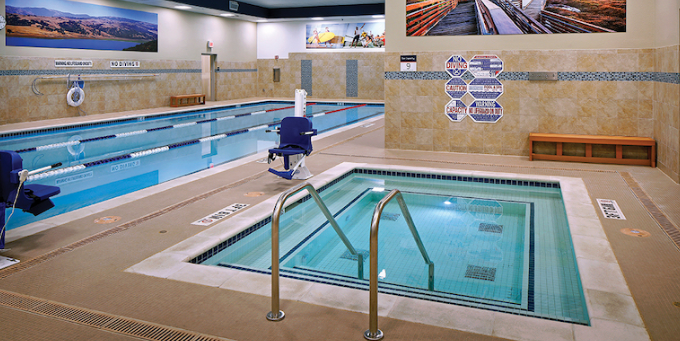Ground Fault Circuit Interrupter (GFCI) protection is usually necessary for saunas. It’s important to understand the electrical needs of a home sauna before you start your search. This means knowing how the spa is wired, particularly whether ground-fault circuit interrupter spa protection is required. Electrical laws demand GFCI protection for hot tubs. It is usually advised to connect a conventional home spa to a 240V, 40A GFCI-protected outlet.
This outlet must only be used for the bathhouse; no other appliances or gadgets should be connected. Adding more electrical loads might cause the circuit to become overloaded and trip. Read on to find out if your sauna requires a certain type of outlet, how much energy it uses, and the regulations for installing cabins. Finally, investigate the causes of the circuit in your steam room breaking regularly.
Table of Contents
What is a GFCI outlet?
An outlet with a ground fault circuit interrupter, or ground fault circuit interrupter, is a specialized electrical outlet that reduces the risk of electric shock. A sensor that tracks the flow of electricity is incorporated into it.
The GFCI outlet immediately cuts off electricity to the circuit to lessen the risk of electric shock when it detects a ground loop fault, such as current leakage from contact with water or a human. These outlets are frequently placed next to water sources, such as sinks and swimming pools, and in other locations with a lot of moisture, including restrooms and kitchens.
GFCI Protection for Saunas (Benefits & Risks)
Sauna GFCI requires protection due to the inherent dangers connected to their electrical systems and the environment in which they operate. The following are the benefits and risks:
Benefits of GFCI Safety for Saunas:
- Electrical Safety: Electric shock danger is greatly decreased in damp or high-moisture situations, such as steam rooms, thanks to GFCI protection. When it senses a ground fault, it immediately cuts the wiring to stop potentially harmful electrical currents from entering the user’s body.
- Electrical Code Compliance: A lot of construction laws and regulations require GFCI protection for plugs in wet locations, including spas. Installing GFCI outlets guarantees respect for these regulations and contributes to the upkeep of a secure home.
- Safety from Improper Wiring: Ground-fault circuit interrupter outlets are capable of identifying defects in the electrical grid, such as broken insulators or wiring, which may result in explosions or electricity shocks. In such cases, they break the system to prevent additional risks and make the required repairs quickly.
- Increased Peace of Mind: If your steam room has ground-fault circuit interrupter protection, you may be more confident that you’re proactively reducing electrical dangers and making spa use safer for you and your family.
Dangers Associated with Saunas Without GFCI Protection:
- Hazards of Electric Shock: Saunas without GFCI protection are more likely to cause electric shock, particularly in moist settings. Water in contact with electrical components may cause a ground fault, which might result in serious injuries or even fatalities.
- Fire Hazards: Electrical fires in spas can result from defective electrical connections or faults in the insulation. As a result of cutting the circuit, ground fault circuit interrupter protection helps identify these problems early on and stops overheating and fires.
- Non-compliance with building standards: If GFCI protection is not installed in steam rooms, this might be a violation of local building standards and regulations. This could have legal consequences or cause issues with property inspections and sales.
- Reduced Safety: Without ground-fault circuit interrupter protection, the sauna environment is less safe overall, which raises the risk of mishaps and injuries, especially in homes with young children or senior citizens.
How much power is used in a sauna?
It’s important to think about a home sauna’s electricity consumption before investing. The typical electricity consumption of a spa is between 3 and 7 kWh. But this consumption might change depending on things like how big the room is and how long people use it. The sauna’s wattage may be used to determine how much energy it needs. As an example, a steam room with 1,000 watts is equivalent to about 1 kWh, a bathhouse with 2,000 watts is equivalent to about 2 kWh, and so on.
How about 240-volt sauna heater wiring?
Wiring a 240-volt spa heater is a common technique and is required in many situations. But if you’re not a skilled electrician, it’s strongly recommended against going on this work on your own. You risk damaging your steam room, yourself, or your property if you don’t follow the code’s specifications for the wiring design and kind of wire that must be utilized.
Sauna circuit breakers
Sauna circuit breakers need to conform to two fundamental code specifications. Firstly, to reduce the chance of harm, they need to be GFCI-protected. Additionally, a separate circuit breaker needs to be installed in the sauna to prevent overloads and ensure that any failures do not affect other areas of the house. These precautions improve security and guard against power outages in other areas of the house.
Criteria for the sauna code
It’s important to become familiar with and understand the relevant code requirements before building a steam room. The codes are usually rather simple when they concern plug-in home spas; they mostly concern making sure the outlet is GFCI-protected and meets the voltage.
If you’re building a separate sauna room, though, there are extra code regulations that must be followed, especially about the materials that must be utilized. This method frequently calls for getting licenses and going through city inspections to make sure safety regulations are being followed.
Power supply for saunas
Simple code restrictions apply to a sauna’s electrical supply. Frequently, the only code needed for a power supply in a steam room is that it must match the voltage of the spa. An electrical short might occur if the power supply voltage is less than the sauna’s, which could harm the wiring in your house as well as the steam room.
What causes your sauna to keep tripping?
There might be other causes of this problem, such as an overload in the circuit, a failing spa component, or an invalid GFCI-protected dryer outlet. The circuit breaker trips as a safety precaution when the spa uses more electricity than it can manage, a condition known as overloading. In addition, wiring problems or internal flaws can cause an overload protection outlet to constantly trip.
Electrical defects caused by faulty spa components, such as controllers or heaters, might trigger the circuit breaker. To properly fix the issue, determining the precise reason could require expert examination and troubleshooting.
Does a sauna need GFCI protection (Conclusion)
GFCI (Ground Fault Circuit Interrupter) safety is usually necessary for baths. This is due to the high levels of moisture in steam rooms, which raise the possibility of electrical shock. Ground faults may be more likely to arise in environments with high humidity and the presence of water.
To prevent potential electrical shocks, ground fault circuit interrupter protection is designed to promptly cut off power when it senses a gap between the in and out currents. Ensuring ground-fault circuit interrupter protection for spas improves user safety. It is advisable to consult the local electrical codes and regulations for any needs particular to sauna installations.
FAQs
The most frequently asked questions are given below:
Does a sauna need GFCI protection?
An essential safety component for any bathhouse installation is a ground-fault circuit interrupter. To shield consumers from risky electric shocks, this gadget detects current leakage and quickly switches off power.
Does a sauna need a dedicated circuit?
Electrical Requirements for Saunas
The sauna’s electrical outlet has to be an exclusive circuit.
What does GFCI protection do?
An electric power outage can occur in as little as 1/40 of a second thanks to the fast-acting circuit breaker known as a ground-fault system interrupter. It functions by comparing the current flowing through the circuit wires to and from the gadget.
Where is the GFCI protection needed?
Electric ranges, wall-hung ovens, tabletop cooking units, microwave ovens, and clothing dryers must all have ground-fault circuit interrupter protection on branch circuits or outlets.







